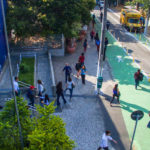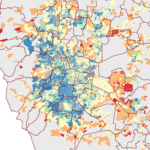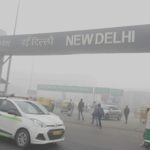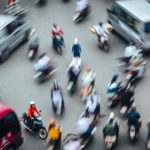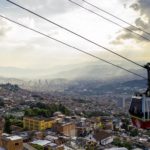Search Results
“Poor and vulnerable” is a common refrain in climate change stories. It’s a phrase used with good reason, to highlight how climate change disproportionately affects the disenfranchised. Economically, politically and socially vulnerable communities feel climate impacts first and hardest. They have fewer ...

The largest and highest-consuming cities in the world have carbon footprints equal to those of small countries. This is the finding of a study surveying the carbon footprint of cities worldwide. Half the world’s population lives in cities, but just 100 cities ...

With a population of 12.2 million – eighth largest in the world – São Paulo faces a daunting task in making its streets safe for all. But in April 2019, the city pledged to do just that, becoming the first ...

On June 10, Arvind Kejriwal, the chief minister of Delhi, announced a new proposal to make public transport free for women. Once cleared, the move – which will cost approximately ₹700 crore ($100 million) to the Delhi government – will make ...

Cities around the world are embracing the movement to make their streets work better for people, not just cars. From Bogotá’s Ciclovía, to Guadalajara’s Via RecreActiva, India’s Raahgiri Days, and Ethiopia’s Menged Le Sewe, many cities have adopted some version ...

Around the world, grassroots movements like Extinction Rebellion and Fridays for Future are sounding the alarm about the climate crisis, and government representatives are responding to the call: national parliaments and cities have declared climate emergencies, the Green New Deal is gathering support in ...

In Mexico City, someone living in one of the wealthiest neighborhoods has 28 times better access to jobs in a 30-minute trip by public transit and walking than someone living in the poorest areas. Twenty-eight times. And this says nothing ...

Most of the rising global attention to air pollution focuses on the impacts that ozone, particulate matter and other pollutants have on human health. This is natural; the numbers in the headlines are striking. The World Health Organization (WHO) estimates that ...

Hand-drawn in black marker and spanning an entire wall of Addis Ababa’s Anbessa company headquarters is a map depicting stops, timetables and fares for the city’s 73-year-old public bus system. Peeling icons and stickers tell a history of corrections and ...

Emmanuel leaves his home at 5 a.m. every morning with his two daughters. They take a mini-bus, or “tro-tro,” from their house in Awoshie, a residential neighborhood of Accra, Ghana, to the central business district where Emmanuel works. The trip ...

Street lighting is important. It allows informal vendors and traders to operate for longer hours and improves road and public safety. It also makes streets feel safer and more secure, especially for women. But street lighting is sorely lacking in many of sub-Saharan Africa’s ...

At Connect Karo 2019, WRI India’s seventh annual conference on sustainable urban development in India, experts across sectors agreed on one big thing: the future of mobility is electric. This marks a rapid evolution of opinion since last year’s Connect ...

In 2003, London followed the example of Singapore and launched a congestion charge, requiring drivers to pay £11.50 ($15.90) to enter the city center and becoming a global example of how this innovative but sometimes fraught policy can work. Sixteen ...

When you think about how to build more resilient cities, does transportation come to mind? Whether we realize it or not, mobility – the choices we make to get where we need to go – is top of mind every ...

Positive change happens in cities, but it’s often lost in a sea of bad news about air pollution, rising costs of living, traffic jams and inequality. When we launched the WRI Ross Prize for Cities in February 2018, we aimed ...

Page 33 of 228« First...1020...323334...4050...Last »










